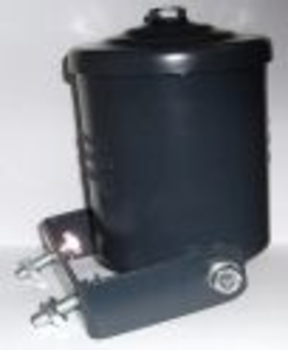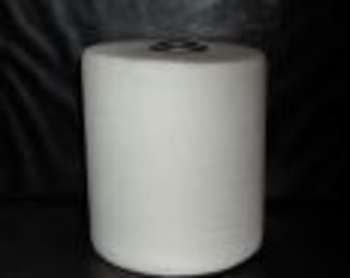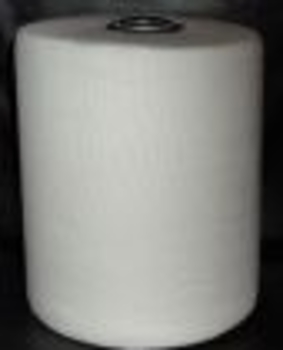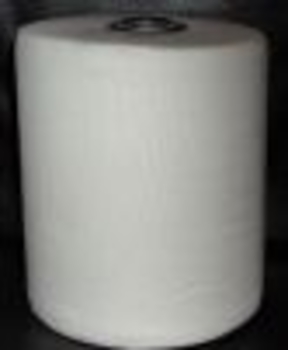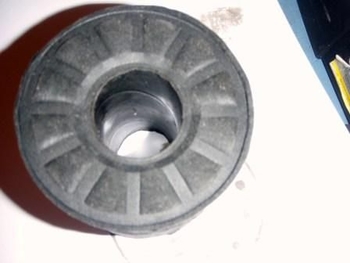Jackmaster Filter Elements are Interchangeable with Kleenoil, Frantz and Some Other Makes of Filters. This means that you can use the filter elements from those filters in our product if you wish to do so. We adopted a standard and have not attempted to hold the purchaser hostage to using our element. Rather, we wish to assure people that, when you purchase our filter, you will always be assured of easy access to a supply of elements. Talk to us at any time you have a question about elements and we will respond with an unbiased answer. The dimensions of our filter elements are approximately 105mm to 106mm in diameter x 105mm in length. They are tightly wound from virgin paper and enclosed in a cotton type bag with a metal ring pull on top to assist in easy removal. The inside diameter of our filter canister is 104mm diameter. Using Off-the-Shelf Paper Rolls. The criteria for using standard toilet rolls is as follows: It is best to use virgin paper - not recycled paper. (a) The roll needs to be tightly wound. This prevents chanelling. (oil finding an easy passage through the roll) The test for this is to poke your finger into the end of the roll. It needs to be hard, solid like a piece of wood or at least almost so. (b) The roll should be made from high quality virgin paper. Recycling paper breaks down the fibres into shorter fibres. Recycled paper will still act as an effective oil filter, but recycled paper becomes more mushy when it is saturated with water - more so than virgin paper and it tends to disintegrate in water more easily. The long fibres of quality paper give it strength and it has the ability to absorb more water. There are many rolls made from good paper and you can get an idea of the quality of rolls by comparing how they tear apart when you stretch the sheets until they tear. You will see the long fibre structure at the torn edges. Good, new paper has a soft feel and appearance. The ply of the paper is not important. There is a lot said about 2 ply paper when looking for good rolls, but this is only because certain good rolls were 2 ply. The working principle relies on layers of paper tightly impacted together and it wouldn't matter how many plys were involved once it is tightly packed. Just remove enough paper until the roll is a tight fit in the canister. For easy removal you can place a couple of thin ribbon tapes under the roll before you insert it. You can tie them at the top of the roll to give you a grip for removal. These can be used to pull it out when you need to. A roll comes out much easier when it has been used and impregnated with oil. (c) The best cardboard centre core is 38mm ID and made from a good thick cardboard. This is the hardest thing to find and is not so important when using the Stainless Steel Spring adaptor which takes care of this. The adaptor simply ensures that the roll is held firmly down on the bottom seal even though it may be larger than 38mm ID. The unique design of this type of filter relies on the roll being forced down onto the lower seal by the oil pressure. As long as you have pushed it firmly onto the seal with the palm of your hand, the oil pressure takes over. However, for rolls with larger ID's, the spring adaptor ensures that the roll is down firmly before the oil pressure begins, otherwise oil would simply bypass the roll from the inlet port to the outlet port. The adaptor is also needed in case you would like to run the filter upside down, which has been done in some cases. Many people use standard rolls without the adaptor successfully, it is simply good insurance. Contrary to what you often hear - that the roll will break down and allow paper mash to enter the engine oil galleries - it is perfectly safe. Paper does not break down in oil as it does in water. It actually becomes stronger. The test for this is to create an oil patch on a piece of toilet paper by saturating an area with oil. Then apply tensile stress and pull it apart. The paper will tear along the edge of the oil patch. The results are magnified by wetting it with water after you create the oil patch. Paper is a great absorbent for water. The fibres soak it up readily. Oil molecules are too large to enter the fibres and tend to surround them and pass between them. Anyway, if the paper could possibly break down in some way, how would it pass through the tiny pressure orifice at the bottom of the filter? Paper pulp would simply block the orifice and back up, creating a tiny plug and prevent anything from passing through. So, even if you used low quality paper and put water through the filter, it couldn't happen. The roll will just absorb water until it is saturated, then it blocks up and will allow nothing through, oil or water. We have done many tests on this and the same principle has been used without problems since early in the last century. Filter elements are $10 each or cheaper in quantity orders. Package quantities are determined by the Post Office satchel sizes available. Quantities other than shown below can be quoted and boxed for sending.
|


